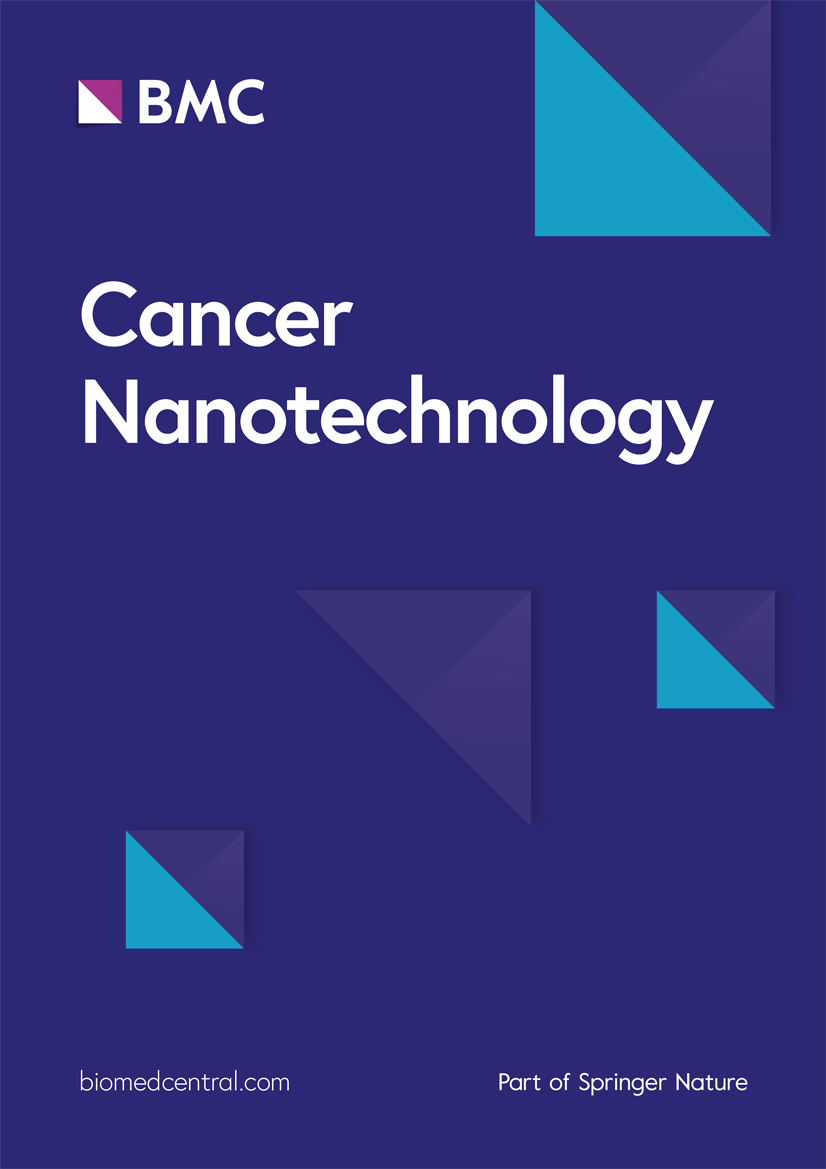CD44-specific short peptide A6 boosts cellular uptake and anticancer efficacy of PEGylated liposomal doxorubicin in vitro and in vivo
IF 4.8
2区 工程技术
Q2 NANOSCIENCE & NANOTECHNOLOGY
引用次数: 0
Abstract
Although liposomes have improved patient safety and the pharmacokinetic profile of free drugs, their therapeutic efficacy has only shown marginal improvement. The incorporation of active-targeted ligands to enhance cellular uptake has shown promise in preclinical studies. However, no active-targeted liposomes have successfully translated into clinical use thus far. This study aimed to evaluate the targeting ability and antitumor efficiency of A6, a specific short peptide (KPSSPPEE) when incorporated into PEGylated liposomal doxorubicin (PLD). The results revealed significantly enhanced cellular uptake. The cytotoxicity of the formulations was determined by 3 h and 6 h incubation of formulations with cells, followed by 48 h incubation to evaluate the targeted ability of the formulations and the results indicated the higher cytotoxicity of A6-PLD (IC50 of 7.52 µg/mL after 6 h incubation) in the CD44 overexpressing C26 cell line compared to non-targeted PLD (IC50 of 15.02 µg/mL after 6 h incubation). However, CD44-negative NIH-3T3 cells exhibited similar uptake and in vitro cytotoxicity for both A6-PLD (IC50 of 38.05 µg/mL) and PLD (IC50 of 34.87 µg/mL). In animal studies, A6-PLD demonstrated significantly higher tumor localization of doxorubicin (Dox) (~ 8 and 15 µg Dox/g tumor for 24 and 48 after injection) compared to PLD (~ 6 and 8 µg Dox/g tumor for 24 and 48 after injection), resulting in effective inhibition of tumor growth. The median survival time (MST) for Dextrose 5% was 10, PLD was 14 and A6-PLD was 22 days. In conclusion, A6-PLD, a simple and effective targeted liposome formulation, exhibits high potential for clinical translation. Its improved targetability and antitumor efficacy make it a promising candidate for future clinical applications.cd44特异性短肽A6在体外和体内促进聚乙二醇化脂质体阿霉素的细胞摄取和抗癌作用
尽管脂质体改善了患者的安全性和游离药物的药代动力学特征,但其治疗效果仅显示出边际改善。结合活性靶向配体增强细胞摄取在临床前研究中显示出前景。然而,迄今为止,尚无活性靶向脂质体成功转化为临床应用。本研究旨在评价一种特异性短肽A6 (KPSSPPEE)与聚乙二醇化阿霉素脂质体(PLD)结合后的靶向能力和抗肿瘤效果。结果显示细胞摄取明显增强。通过与细胞孵育3 h和6 h来测定制剂的细胞毒性,然后再孵育48 h来评估制剂的靶向能力,结果表明A6-PLD对CD44过表达C26细胞系的细胞毒性(孵育6 h后IC50为7.52µg/mL)高于非靶向PLD(孵育6 h后IC50为15.02µg/mL)。然而,cd44阴性的NIH-3T3细胞对A6-PLD (IC50为38.05µg/mL)和PLD (IC50为34.87µg/mL)的摄取和体外细胞毒性相似。在动物实验中,与PLD(注射24和48后~ 6和8µg Dox/g肿瘤)相比,A6-PLD显示出更高的阿霉素(Dox)(注射24和48后~ 8µg Dox/g肿瘤)的肿瘤定位,从而有效抑制肿瘤生长。葡萄糖5%组的中位生存时间(MST)为10天,PLD为14天,A6-PLD为22天。综上所述,A6-PLD是一种简单有效的靶向脂质体制剂,具有很高的临床转化潜力。其良好的靶向性和抗肿瘤作用使其成为未来临床应用的有希望的候选者。
本文章由计算机程序翻译,如有差异,请以英文原文为准。
求助全文
约1分钟内获得全文
求助全文
来源期刊

Cancer Nanotechnology
Pharmacology, Toxicology and Pharmaceutics-Pharmaceutical Science
CiteScore
5.20
自引率
1.80%
发文量
37
审稿时长
15 weeks
期刊介绍:
Aim:
Recognizing cancer as a group of diseases caused by nanostructural problems (i.e. with DNA) and also that there are unique benefits to approaches inherently involving nanoscale structures and processes to treat the disease, the journal Cancer Nanotechnology aims to disseminate cutting edge research; to promote emerging trends in the use of nanostructures and the induction of nanoscale processes for the prevention, diagnosis, treatment of cancer; and to cover related ancillary areas.
Scope:
Articles describing original research in the use of nanostructures and the induction of nanoscale processes for the prevention, diagnosis and treatment of cancer (open submission process). Review, editorial and tutorial articles picking up on subthemes of emerging importance where nanostructures and the induction of nanoscale processes are used for the prevention, diagnosis and treatment of cancer.
 求助内容:
求助内容: 应助结果提醒方式:
应助结果提醒方式:


